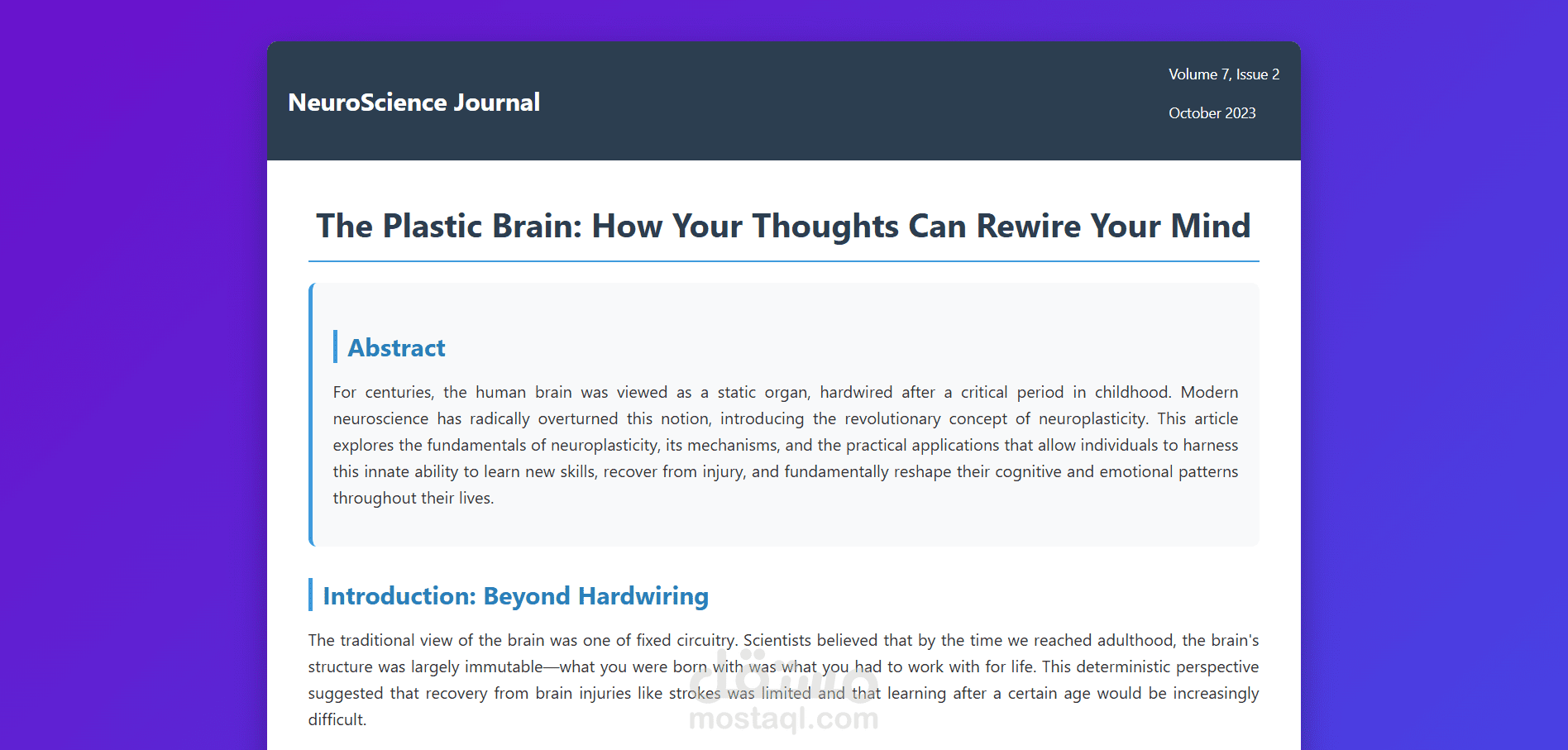The Plastic Brain: How Your Thoughts Can Rewire Your Mind
تفاصيل العمل
Abstract
For centuries, the human brain was viewed as a static organ, hardwired after a critical period in childhood. Modern neuroscience has radically overturned this notion, introducing the revolutionary concept of neuroplasticity. This article explores the fundamentals of neuroplasticity, its mechanisms, and the practical applications that allow individuals to harness this innate ability to learn new skills, recover from injury, and fundamentally reshape their cognitive and emotional patterns throughout their lives.
